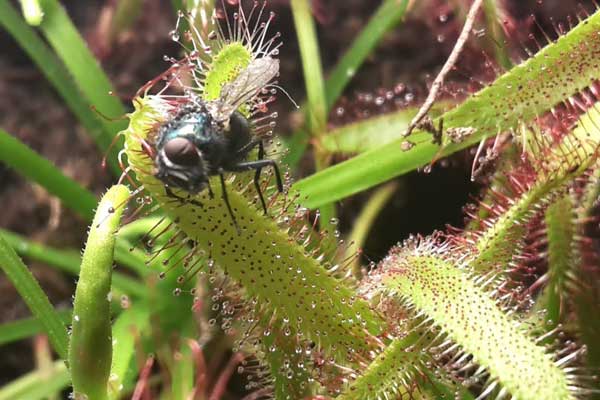These plants will kill your fungus gnat problem

Sundews are carnivorous and will get rid of those fungus gnats on your plants.
What you need to know:
- Luckily, there are several houseplants that can actually help you eradicate those annoying flying pests. Even better, they will also make great additions to your plant collection.
Do you have a fungus gnat problem? This is a problem that is experienced by many people that have houseplants. Sooner or later, plants are likely to experience a case of fungus gnats at least once.
Luckily, there are several houseplants that can actually help you eradicate those annoying flying pests. Even better, they will also make great additions to your plant collection.
Adult fungus gnats are harmless unless you have a greenhouse-scale infestation, but they are still very annoying. Fungus gnats lay their eggs in the minuscule top layer of potting mix and then hatch before you even know they are there. The larvae are only a quarter of an inch long and impossible to see.
If you see fungus gnats flying around, do not panic. Instead, head out to your favourite carnivorous plant retailer and pick up a few new plants for your collection.
After all, these plants evolved over thousands of years to catch bugs such as fungus gnats. Place one or a few of them among your houseplant menagerie and let nature run its course.
What you will be looking to buy is a type of carnivorous plant that is a flypaper or sticky paper plant. Plants that are classified as flypaper traps are covered in a combination of sticky nectar and mucilage that traps any bug that happens to come close enough to touch the leaf.
Carnivorous plants such as Drosera, Pinguicula, and Drosophyllum are all flypaper traps that can quickly take care of fungus gnats. Here is what you need to know.
Sundews, also known as drosera, are very cute and very dangerous to fungus gnats. Of the more than 150 species, Cape sundews tend to be the easiest to cultivate. You are likely to get one of these if you are buying a beginner pack of carnivorous plants.
Sundews have been naturalised all over the world, but the most cloistered populations are in Australia. They are native to boggy areas where tiny, flying insects are prevalent.
Butterworts, also known as “pings,” are just as cute as sundews. Pings are native to North America, Europe, Asia, Central America, and South America. There are currently 80 species, some of which are tropical and some of which are temperate; but all of them are flypaper traps and will take care of those fungus gnats for you.
The dewy pine is native to Portugal and southern Spain. While they tend to be more difficult to care for than the above pings or sundews, they do have quite the reputation for being one of the most successful insect killers in the carnivorous plant world.
The leaves are so incredibly sticky that in the wild dewy pines are typically found completely covered in bugs. Another thing that makes this plant unique is that it is one of the only carnivorous plants that can grow in the desert environment.
Source: apartmenttherapy.com




